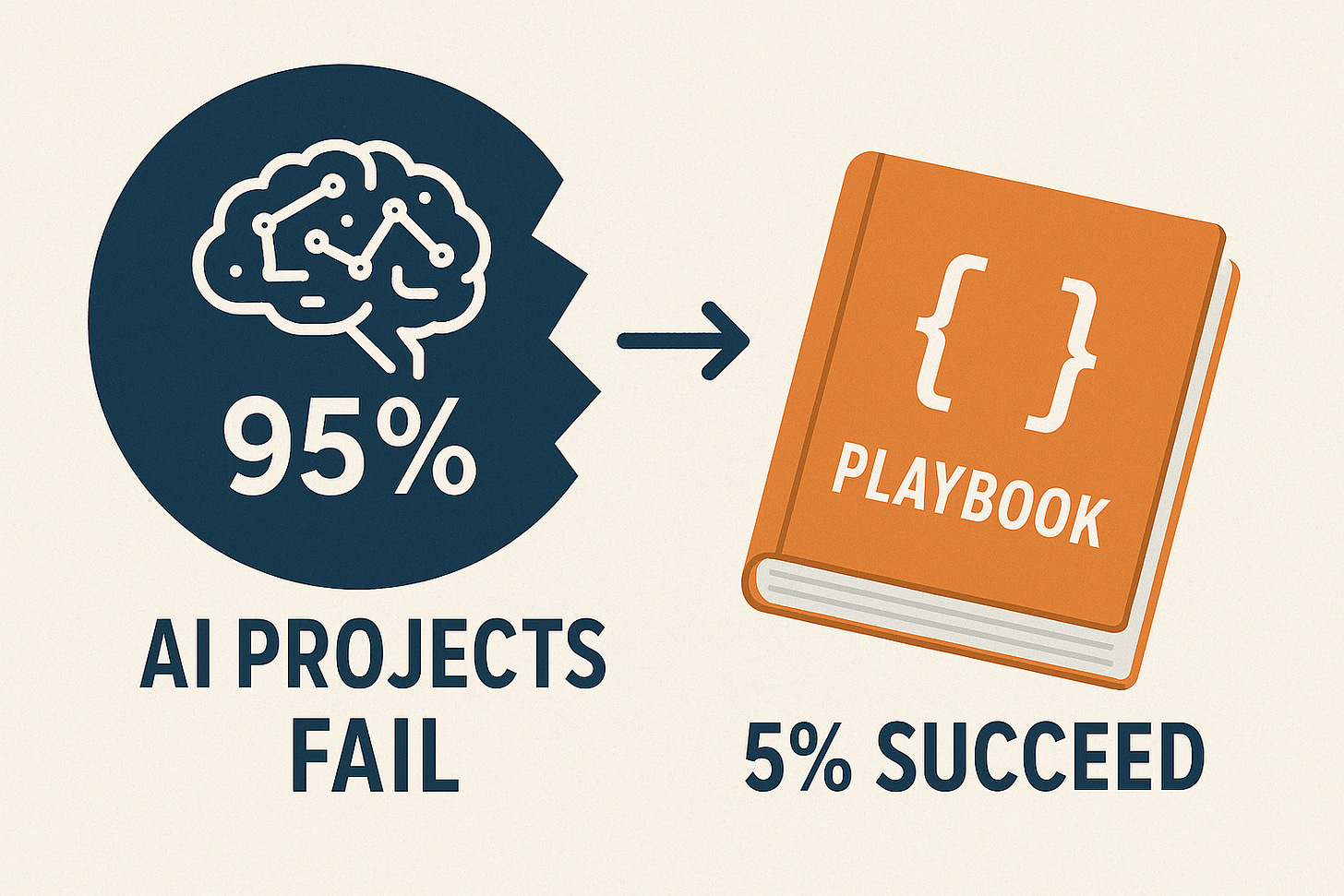Why 95% of Generative AI Pilots Fail — And the Adoption Playbook to Beat the Odds
The Playbook is much simpler than you think
The GenAI Divide: State of AI in Business 2025, published by MIT’s NANDA initiative, reveals a sobering reality: while generative AI holds huge promise for enterprises, 95% of initiatives aimed at driving rapid revenue growth are falling flat.
Despite the rush to integrate powerful new models, only about 5% of AI pilot programs actually accelerate revenue in a measurable way. The vast majority stall out, adding costs without delivering impact on the P&L. MIT’s research, based on 150 executive interviews, a survey of 350 employees, and analysis of 300 public deployments, shows a clear divide between the rare success stories and the many projects stuck in neutral.
From my own work with a couple dozen startups, I have seen the other side of this coin. Some younger companies are doing exceedingly well with GenAI. A few, led by 20-something founders, have gone from zero to roughly $3 million in revenue within two years of getting seeded. While illustrative, these cases highlight what separates success from stagnation.
What’s Behind Successful AI Deployments?
Focus
The standout startups did not try to do everything at once. They picked one pain point and executed it extremely well. They also knew better than to reinvent the wheel. Instead of burning resources to “figure it out,” they leaned on platforms and vendors with real experience. That gave them speed, credibility, and guardrails.
Partnerships vs. Solo
MIT’s research showed this clearly: partnerships outperform solo builds. Purchased solutions and vendor collaborations succeed about two-thirds of the time, while internal builds succeed only one-third as often. This gap is especially visible in financial services and other heavily regulated sectors. Almost every large firm is trying to build proprietary systems, yet most of those efforts quietly fail.
Having worked inside some of the biggest banks, I understand the instinct to protect data and own the full stack. But there is a middle ground: partner with those who have cracked real use cases, then extend selectively. Fintechs tend to do this better, partly because they are not bogged down by committees and bureaucracy. They move faster and are more plugged into the GenAI ecosystem.
Empowering Line Managers Over AI Labs
Too many companies keep AI initiatives confined to central labs. But the people who actually drive adoption are line managers. They are the ones choosing tools, shaping workflows, and making sure solutions stick.
Meanwhile, workforce disruption is already here. In customer support and administrative roles, we are seeing companies avoid layoffs but quietly stop backfilling positions. That means the work left behind needs tools that integrate quickly and adapt over time, and line managers are the ones best positioned to make that happen.
The Playbook for Success
If there is a throughline, it is this: success is not about the model, it is about how you adopt it. From both the research and what I have seen in the field, the playbook looks like this:
Pick One Pain Point → Do not boil the ocean. Start narrow and solve deeply.
Partner, Do Not Reinvent → Buy where speed matters; build only where differentiation demands it.
Empower Operators → Put line managers in the driver’s seat, not just central labs.
Tie to P&L Impact → Every pilot should link back to revenue lift or cost savings.
That is the difference between being part of the 5% that turn pilots into profit and the 95% that never get out of first gear.




This really highlights the gap between effort and real business impact. It’s a reminder that initiatives need clear alignment with outcomes, not just activity, to truly move the P&L needle.